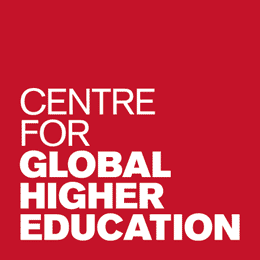Simon Marginson is Professor of Higher Education with emeritus status at the University of Oxford, and Professor of Higher Education at the University of Bristol in the UK. He is Honorary Professor at Tsinghua University in China and a Professorial Associate with the University of Melbourne in Australia, and also Joint Editor-in-Chief of the journal Higher Education. Simon was the founding Director of the ESRC/RE Centre for Global Higher Education (CGHE), which he led between 2015 and 2024. Simon’s research is focused primarily on global and international higher education, the global science system, higher education in East Asia, the contributions of higher education, and higher education and social inequality. Simon led
CGHE’s project 8 which investigated the public good role of higher education in ten countries. The project found that while a broad notion of public good has been largely emptied out of policy in the English-speaking countries, where economic definitions of individualised pecuniary value are dominant, recognition of the broader individual and collective outcomes of higher education continues in different ways in other jurisdictions including France, Finland, South Korea and China. The study in England discovered however that despite the narrow economic framing used by Westminster policy makers, both higher education practitioners and policy professionals believe that higher education makes a large and multiple contribution to both national and global public goods.
With Lili Yang, Simon co-authored a 2022 paper ‘Individual and collective outcomes of higher education: a comparison of Anglo-American and Chinese approaches’ which found that if the Anglophone economic notion of a zero-sum trade-off between public goods and private goods is removed, then the full range of higher education’s contributions emerge and the two systemic approaches to the public good role are compatible despite differences in the respective political cultures.
Simon’s most recent book, authored with CGHE researcher Vassiliki Papatsiba of Cardiff University, is
Brexit, EU students and UK higher education: Broken bridges, published by Bloomsbury Academic in August 2025. Forthcoming, also from CGHE research, are
The future of cross-border academic mobility and immobility: Power, knowledge and agency, edited by Aline Courtois, Simon Marginson, Catherine Montgomery and Ravinder Sidhu (Bloomsbury Academic, December 2025); and the sole authored Simon Marginson,
Global higher education in times of upheaval: On common goods, geopolitics and decolonisation (Bloomsbury Academic, January 2026). All three of these books are available for free download on an Open Access basis with the support of UKRI.
You can contact Simon at
simon.marginson@bristol.ac.uk or
simon.marginson@education.ox.ac.uk